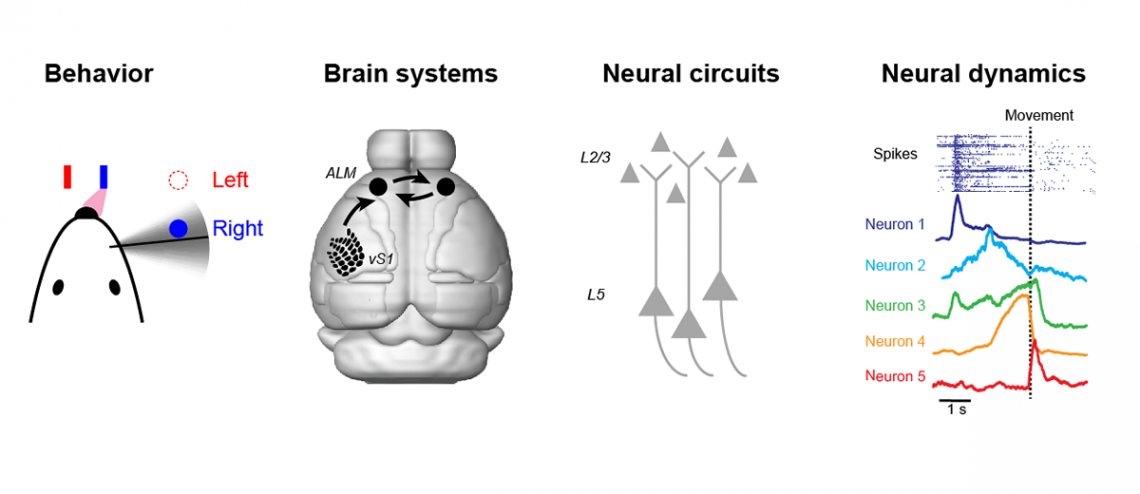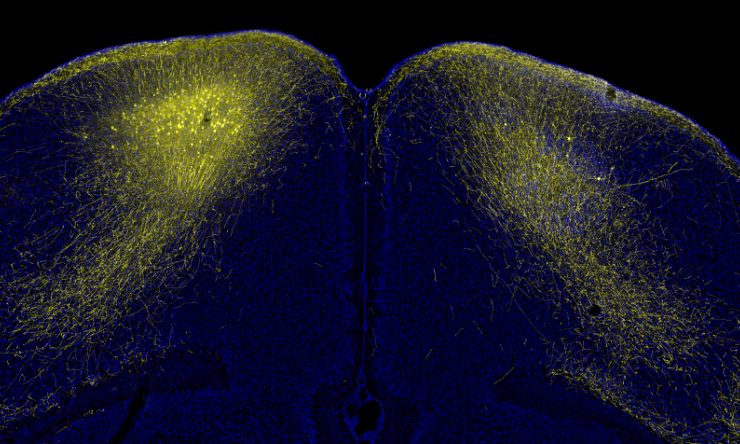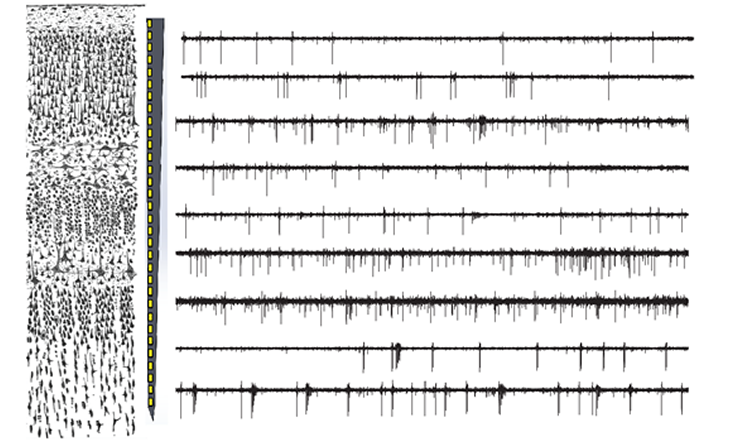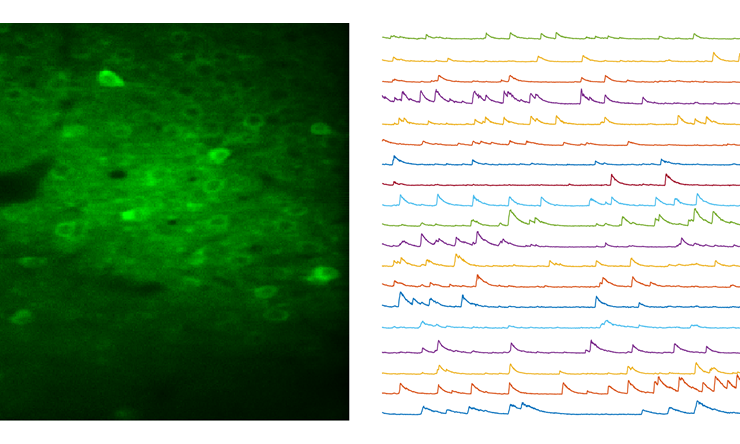
How Does the Brain Give Rise to the Mind?
We approach this question by studying how the brain enables us to make intelligent movements. Imagine solving a Rubik’s cube. One has to first gather sensory information, based on the configuration of the cube, decide on a plan, keep the plan in memory, and finally turn the plan into a sequence of skilled movements. We are interested in understanding how this sequence of events is implemented in the brain.
Unlike simple reflexes, the brain preprograms, or plans, voluntary movements before they are executed. Motor planning involves activity distributed widely across the brain. We are developing behavioral tasks and tools to delineate when and how activity in specific brain regions drives sensory-guided motor planning in the mouse. We look at the involved neural circuits in the time window before the movement. We study how different types of neurons interact to give rise to the activity patterns preceding the movement. We establish relationship between specific activity patterns and behavior using perturbations. Many of our approaches require us to develop new techniques to record and manipulate specific neural circuit nodes in intact animals during behavior.
Research Purpose
We use motor planning as a window into understanding the internal processes that govern cognition. The act of motor planning taps into multiple aspects of multiple aspects of flexible behavior, such as decision making and short-term memory. Our research seeks to mechanistically describe how neural circuits produce these phenomena. Electrical activity of neurons and cellular properties form the basis of neural circuits. Our research program aims to establish platforms upon which we can understand why and how genetic or cellular dysfunctions are linked to abnormal or maladaptive motor and cognitive behaviors in disease models.
Our Projects
- Developing quantitative motor planning behaviors
- Mapping multi-regional circuits supporting motor planning
- Circuit analyses of motor cortex during motor planning
Funding
Our work is funded by:
- Alfred P. Sloan Foundation
- Kavli Foundation
- McKnight Foundation
- NIH BRAIN Initiative
- NIH NINDS
- Pew Scholars Program
- Searle Scholars Program
- Simons Collaboration on the Global Brain
- The Robert and Janice McNair Foundation
- Whitehall Foundation

Circuit Analysis
We combine recordings and manipulations of anatomically defined neurons to perform circuit analysis. This image shows projection neurons in the anterior lateral motor cortex labeled with a fluorescent protein.

Multi-electrode Recording
We perform multi-electrode recordings in conjunction with behavior and optogenetics to map relevant neural activity. This image shows spiking activity across cortical layers recorded on a silicon probe.

Two-photon Imaging
We combine calcium imaging with other labeling and perturbation techniques to link activity patterns to circuit nodes. Neurons in this image are transduced with a genetically encoded calcium indicator, GCaMP6.







